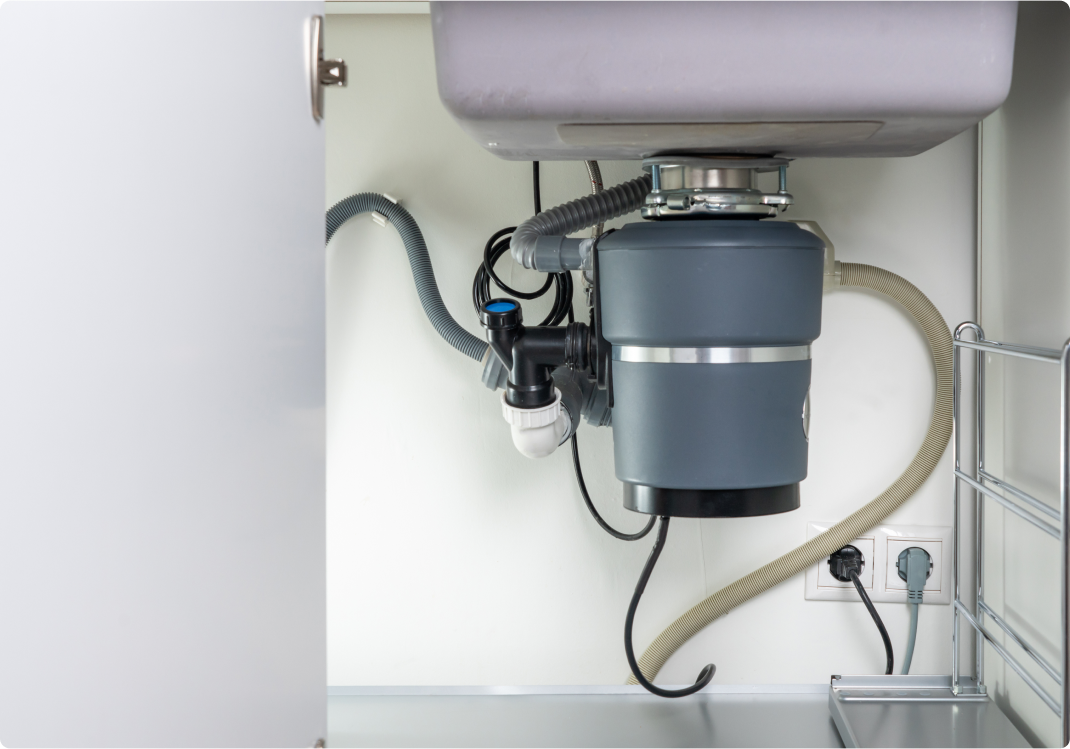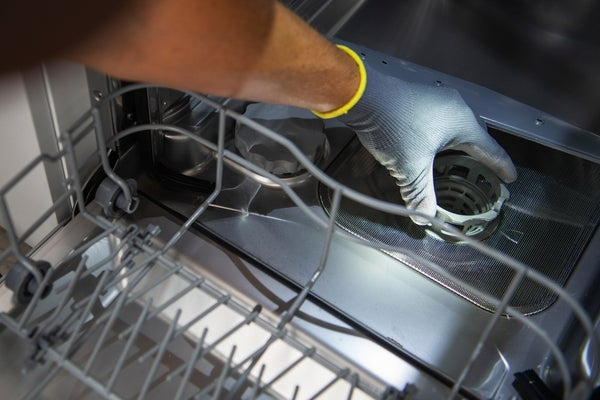You scrape the dinner plates into the sink, flip a switch and watch the food particles disappear. After that, you never think twice about your garbage disposal. You definitely don’t think about installing a new one. But even the best disposals eventually need to be replaced. When that time comes, be prepared with these quick tips on what to consider when shopping for a garbage disposal.
Smells like time to replace that garbage disposal
If you notice these tell-tale signs, it may be time for a new garbage disposal.
- It frequently gets clogged.
- You reset it regularly.
- The odors aren't alleviated.
- The blades aren’t chopping efficiently.
- You have a leak that can’t be fixed.
Related: Ultimate Guide to Garbage Disposal Maintenance
Types of Garbage Disposal: Batch vs Continuous Feed
There are two types of garbage disposals to choose from: the continuous feed and the batch feed. Both get the job done; however, the continuous feed disposals are the easiest to use. Also the most commonly used disposal, the continuous feed version has an open mouth and is operated by a switch. The batch feed disposal, on the other hand, requires that you place your food waste into the chamber and close the stopper lid to activate the food grinder inside.
If you find that you’re constantly dropping silverware and other non-food items in your disposal, you may want to consider the batch feed version. If, on the other hand, you don’t have that issue and prefer the added convenience of an on/off switch, the continuous feed version is right for you.
Related: 5 Garbage Disposal Dos and Don'ts
How to Pick a Garbage Disposal
It’s easy to know what to buy if you know what to look for in a garbage disposal. Consider how important the following factors are to you:
- What size garbage disposal do I need?
The smaller the motor size, the fewer and softer the food particles need to be. For example, a one-third or one-half horsepower (HP) motor is perfect for a single homeowner occasionally grinding soft vegetables. A three-fourths or one HP motor, on the other hand, is much more suited to a large family that often eats at home. It’ll provide smoother operation, finer pulverization and less jams — which equals less stress on your wastewater system.
- The right grinding chamber size and material
Chambers in disposals with more HP are larger, since their motors can handle more food. And chambers and blades made of stainless steel are longer-lasting, more efficient, the easiest to clean, and they won’t rust.
- Added features
Of course a garbage disposal is going to make noise. Better quality (and more expensive) units, however, tend to have better insulated grinding chambers, so there’s a marked difference in the noise level. Similarly, some models offer additional features, such as sound baffles (to lower the decibel level of the unit), anti-splash baffles (to keep your sink cleaner) and corrosion protection shields.
Bonus tip: If your home has a septic system consider buying a garbage disposal with an enzyme reservoir to help break down the food scraps.
How to change a garbage disposal
Once you’ve picked out your new garbage disposal, you have another decision to make: have a Pro install it or try to do the job yourself. Here are some DIY instructions for replacing a garbage disposal.




